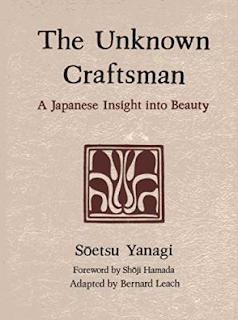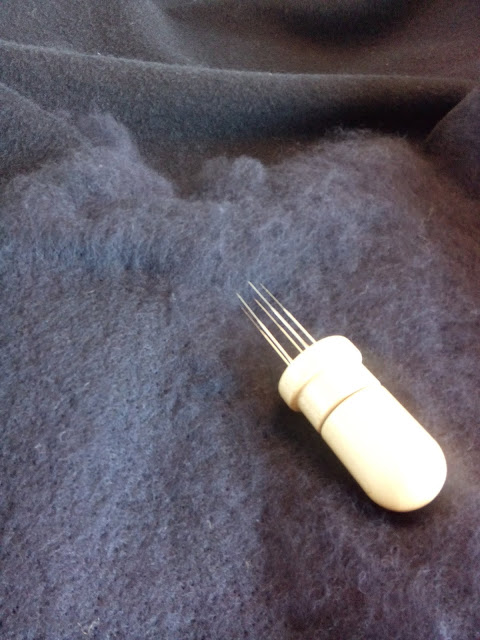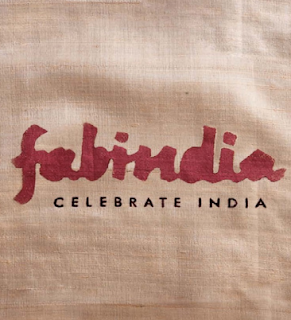11:The Way of Craftmanship
Some written words by the visionary Japanese writer on arts and crafts Soetsu Yanagi. Yanagi was 'the William Morris of Japan', although he merely wrote and was not a craft maker himself. He was the founder of the Japan Folkcraft Museum which was established in 1935. He was a fierce ambassador of handcrafts with a strong love for folk craft. Individual craft makers were, as he believed, too self-focussed. He preferred the unknown craftsman for the beauty of their work spoke quietly in the usage of the objects and the dedication with which it was made. "Fine art is made by a few for a few, while folk art is made by the many for the many."
He wrote many essays, most of which are collected in the book 'The Unknown Craftsman'. (1972) The beauty of crafts, the danger of machine-produced items, how pattern works, the buddhist idea of beauty, the tea rituals and the responsibility of the craftsman are among the issues he talks about. And as many of the essays are written 90 to 60 years ago, I find it astonishing how they can be of great value today while struggling with our relationships with objects.
In 1927 he wrote a q&a from which I would like to quote some parts. Once again: 1927!!
Q. What are crafts?
A. Things made to be used by people in daily life, such as clothes and furniture. Something different from fine art, such as pictures made to look at.
Q. What is the particular kind of beauty in crafts?
A. Beauty that is identified with use. It is beauty born out of use. Apart from use there is no beauty of craft. Therefore, things made that do not stand up to use or that ignore utility can barely be expected to contain this kind of beauty.
Q. What is the meaning you attach to the word "use"?
A. The word is not to be understood merely in its materialistic sense. The reason for this is that mind and matter must not be thought of as separate. Use therefore covers both. Such objects are to be looked at and touched with the responsive feeling of pleasure in use. If crafts are only judged from a utilitarian point of view, then pattern, for example, is uncalled for. But good pattern adds to the function of that utensil. It becomes an indispensable part of use.
Q. Which contains greater beauty; folkcrafts of artist crafts?
A. If we place them side by side, strangely enough the artist crafts cannot said to be better, for they depend upon the personality of the artist rather than the character of the craft. If the names of the artists were unknown, could they have stood the contest? There are people who buy the name of a maker rather than quality......The works of artist craftsmen are not primarily intended to be just good pots so much as to display the fine sense or strength of personality of the maker- the flavour of himself rather than the flavour of mankind, which crafts exude.
Q.How does industrial capitalism destroy beauty of folkcraft?
A. Because the objective of production is profit alone, and even objects' utility is secondary. In front of the eyes of the capitalist is the word 'profit'. The quality, beauty and health of an object are all secondary considerations......Crafts originally sprang from a person's making things for his own use. That was followed by selling for the use of others, and the next stage was the change from handwork to the machine. On the face of things this is a natural evolution, but seen from the other side this process means a change from what was at first healthy into insensibility, from freedom to cold expression and from kindness to avarice. In this way an age ended that produced almost no ugliness, and a new period was launched where beauty in craft became very difficult. We now live in a time of severe change.
Q. Are handcrafts not out of date?
A. I do not think so. We must arrest the harm that is being done by misuse of machines. I am not proposing the rejection of the machine, but I am saying that we must curb the unlimited spread of that mechanisation that brings with it loss of beauty, bad products and bad conditions of life.
....Handcrafts are not against the machine. Where mechanisation can dovetail with handwork it is of obvious benefit to man, but where it destroys the values in the work of the human hand it is downright stupid. Handwork, because it has nature behind it, has a way of fostering good life.....There is no change in the basic importance of the hand or its work. The cry for handwork will arise again and again.
Q. How then, can we resuscitate living craftsmanship?
A. It would be most difficult without a change in the social system. Under present conditions folkcrafts are dying, bad factory products are increasing and the artist-craftsman works for the collector. Here and there pockets of traditional crafts can be found, a thin trickle from a healthy past. Whenever I see them, the desire rises to help them, but it is a difficult task as things stand. I am keenly aware of the urgent need for social change....In my opinion, now that capitalism has killed handcrafts, the only way is through guilds. The finest crafts were produced under it. Guilds and crafts were inseparable. Beautiful crafts were the outcome of the co-operation between craftsmen.
Q. In what type of former crafts do we find the most healthy kind of beauty revealed?
A. Rather than in precious and refined forms of art, it is among the odds and ends of things hitherto scorned or derided, among objects of unstressed and ordinary daily life (getemono) that the norm of health may be found. By health, I mean to point at the honest quality, the form and feeling that is in full accordance with use, which is the very seeing eye of the craft. The bad handling of material, the over-complicated procedures of technique, over-employment of decoration, slick skills, one-sidedness of personality, over-self-consciousness- these are all forms of disease for the simple reason that they do not fit the purpose of use.
This could have been written recently. Yanagi's plea for unknown craftsmanship might sound awkward to us. Crafts nowadays have a strong sense of the personality of the maker. But Yanagi's observation at that time that artist craftsmen (and women, everyone, as we would now stress) depend upon their personality and not so much on the personality of the craft is again quite right. We might however need that nowadays as a stage towards a new relationship with the objects that surround us in our daily life. A change of the social system, the thought of the re-establishement of guilds and the idea of 'getemono' can be of great value now. We also want fine arts, we also want some fun. But Yanagi's revolutionary ideas from long ago can assist with the shift we so desperately need.




Reacties
Een reactie posten